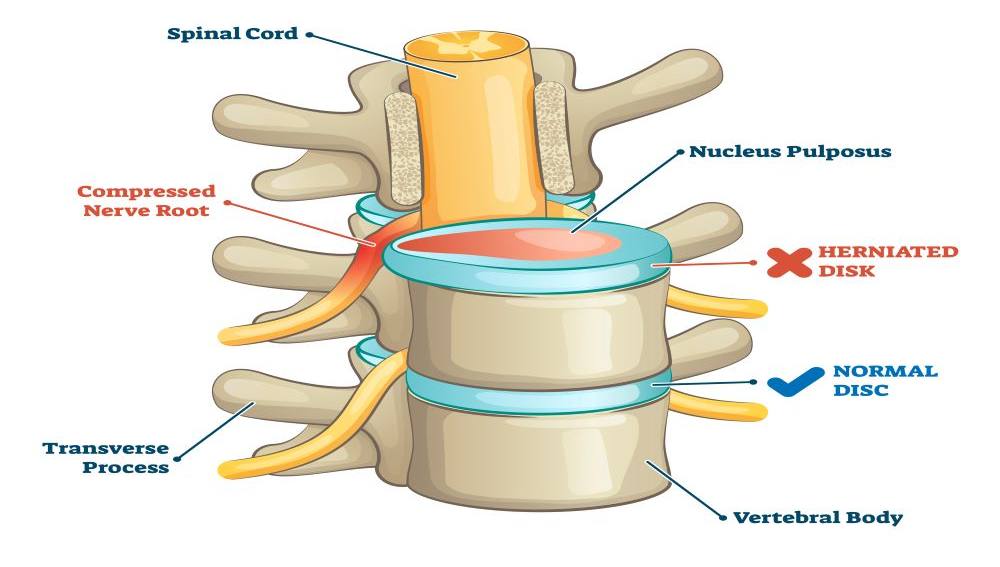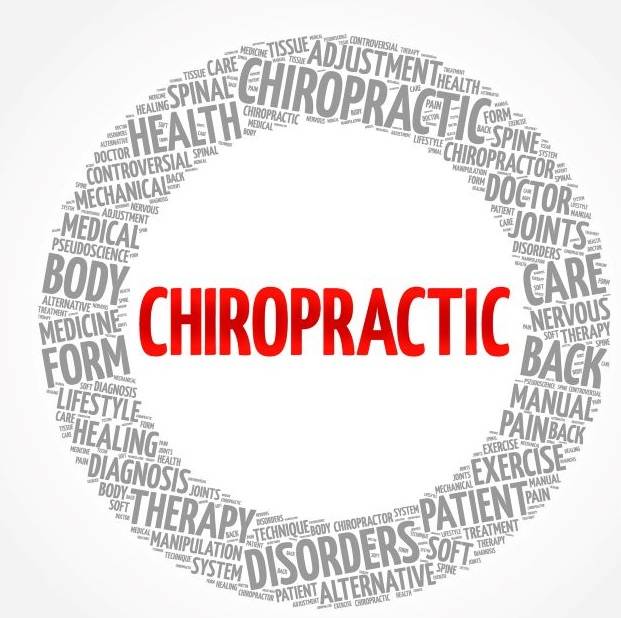 For those who have experienced the relief of a chiropractic adjustment, it may feel a little like magic. In the span of minutes, a chiropractor does what feels like just pressing on your back, and you may have an immediate reduction in pain and feeling of reinvigoration. But a chiropractic adjustment is actually an extremely precise technique that requires years of training to master, including training on how to determine what part of the spine requires care. A thorough understanding of the spine itself and how to properly manipulate it allows professionals to provide accurate and effective back and neck pain treatment.
For those who have experienced the relief of a chiropractic adjustment, it may feel a little like magic. In the span of minutes, a chiropractor does what feels like just pressing on your back, and you may have an immediate reduction in pain and feeling of reinvigoration. But a chiropractic adjustment is actually an extremely precise technique that requires years of training to master, including training on how to determine what part of the spine requires care. A thorough understanding of the spine itself and how to properly manipulate it allows professionals to provide accurate and effective back and neck pain treatment.
Anatomy of the Spine
One reason that chiropractic care requires extensive training is the complexity of the spine itself. While the spine refers to the 33 bones that are stacked in the center of the back, it is part of much more in the body, involving tissues and nerves as well as connections to nearly every body part. The spinal column, which is the series of 33 vertebrae and the discs that sit between them, provides the main support for your body, allowing you to do things like stand upright, bend, and twist. This column also protects the spinal cord from injury, along with other systems.
Issues with the spine are commonly referred to as misalignments or subluxations. This occurs when the spine is not aligned properly, causing it to lose function or impact other parts of the body and nervous system. Even minor damage to one part of the spine can have serious side effects when misalignments are the result.
Muscles
There are two main muscle groups, extensors and flexors, that impact the spine. Extensor muscles enable us to stand up and lift objects and are attached to the back of the spine. Flexor muscles are in the front, including the abdominal muscles, and enable us to flex and bend forward.
These muscles also serve to stabilize the spine. A simple issue like poor muscle tone can pull your entire body out of alignment, placing a strain on the spine.
Vertebrae and Discs
 Each of the 33 interlocking bones that form the spinal column is known as a vertebra. These are numbered and divided into regions called the cervical, thoracic, lumbar, sacrum, and coccyx. The top 24 vertebrae are movable, while the sacrum and coccyx are fused. Each function differently to help the spine work correctly:
Each of the 33 interlocking bones that form the spinal column is known as a vertebra. These are numbered and divided into regions called the cervical, thoracic, lumbar, sacrum, and coccyx. The top 24 vertebrae are movable, while the sacrum and coccyx are fused. Each function differently to help the spine work correctly:
- Cervical: Support the weight of the head and have the greatest range of motion.
- Thoracic: Holds the rib cage and protects organs like the heart and lungs.
- Lumbar: Bears the weight of the body.
- Sacrum: Connects the spine to the hip bones.
- Coccyx: Provides attachment for ligaments and muscles in the pelvic floor.
Between each vertebra is a cushiony intervertebral disc that keeps the bones from rubbing together and serves as a shock absorber. These discs have a tough outer ring and a soft inner nucleus. Each vertebra also has small facet joints that allow it to connect to the vertebrae directly above and below it.
Any part of the bone itself or the disc can be damaged, knocked out of place, or lose its function over time.
Ligaments
The strong, fibrous bands that hold the vertebrae together, stabilize the spine, and protect the discs are known as ligaments. The spine has three major ligaments, which help to prevent excessive movement of the bones.
Spinal Cord and Nerves
Between the brainstem and the first lumbar vertebra is the spinal cord, which is the body’s main method of communication between the brain and the body. Motor messages and sensory messages travel via nerves along the spinal cord, facilitating reactions and movement.
Thirty-one pairs of spinal nerves branch off of the spinal cord to carry these messages throughout the body. Each has two roots- one to carry information to the brain and one from the brain. These nerves correspond to their neighboring vertebra and are heavily impacted by them.
Any damage to the spinal cord or nerves can mean a loss of sensory or motor function to specific parts of the body.
How Chiropractic Adjustments Work
Chiropractic adjustments are the main technique used by chiropractors to address any misalignments in the spine. This is primarily done by applying quick, short force to the joints in the spine to help them slowly return to the proper position.
There are a variety of methods and techniques that can be used during an adjustment. Some chiropractors will use their hands to pop joints into place, while others will use a drop table or activator, and some may rely on more gentle stretching. Regardless of the exact method, the goal of each adjustment is to restore alignment and help the body to heal naturally from whatever is causing problems.
Although adjustments are a universal chiropractic treatment, no two people will get the exact same adjustment. Each treatment is customized based on your condition and the goal for that session. A chiropractor may use more or less pressure, different techniques, and different positions between patients and between sessions.
While adjustments are extremely effective, they are not typically a one-time treatment. Because of the flexibility in the spine, your joints often try to return to their misaligned position, especially if they were previously there for a long period of time. Each session will bring some relief, but it can take weeks or months of care to help the spine learn how to function in an aligned position again.
Types of Chiropractic Adjustments
 Depending on your exact needs and your chiropractor’s training, you may experience different types of chiropractic adjustments. Each is slightly different but will have the same goal of aligning your spine and reducing your pain.
Depending on your exact needs and your chiropractor’s training, you may experience different types of chiropractic adjustments. Each is slightly different but will have the same goal of aligning your spine and reducing your pain.
Some of the most common types of adjustments include the following:
- The Diversified Technique: This technique is the most widely used, with 96% of all chiropractors using it on about 70% of patients. Practitioners use hands-on thrusts to very precisely target misalignments and increase the range of motion in that area. The goal is to ensure and maintain proper movement of the spine.
- Spinal Manipulation or Mobilization: Both chiropractors and physical therapists use this method to relieve pressure on joints, reduce inflammation, and improve nerve function. It uses gentle thrusting motions and stretching to achieve these results.
- Thompson Drop–Table Technique: The main element of this technique is a specially designed table made from padded platforms that have been fitted with drop mechanisms so the patient can be “dropped” a fraction of an inch. The chiropractor then applies a quick thrust to complete the adjustment and trigger the dropping motion.
- Gonstead Adjustment: To restore disc alignment and maximum mobility, this is administered with the patient sitting up or lying on their side. This position allows even more specificity, especially in the lower back and pelvis.
- Activator: A small handheld device called an Activator is commonly used to administer gentle impulses to the extremities or the spine itself. This spring-loaded device is used to adjust the tone of the nervous system and is effective for a variety of conditions, including headaches and lower back pain.
- Flexion-Distraction: This technique uses a special table that distracts and flexes the spine in a gentle, rhythmic motion. This is commonly used to treat symptomatic disc injuries that are causing back pain or leg pain. Patients who are extra sensitive to adjustments often prefer this method.
- Spinal Decompression: A special table can be used to carefully stretch the spine and promote a healthy flow of water, oxygen, and essential fluids to the discs and throughout the spine. This is commonly used to treat back pain that results from disc injuries and conditions.
It is very common for a chiropractor to use multiple techniques on one patient, or even in one session, depending on what they determine is necessary.
Techniques to Determine Where to Adjust
As part of designing each adjustment, a chiropractor will be sure to understand what the underlying cause of your condition may be and what parts of the spine should be adjusted. A standard set of diagnostic guidelines help to make this determination, which is why your first visit to the chiropractor may not even include an adjustment. You will likely be asked to share information about any symptoms, your lifestyle, and your medical history at this time. There may also be a physical examination and diagnostic imaging, like x-rays, to help create a personalized plan of care.
The goal of these evaluations is to assess the nature and extent of your concerns and identify their root cause. Chiropractors may use a variety of techniques to get to this information, including some we have laid out below.
Range of Motion Assessment
As part of a physical exam, you may be asked to complete various movements in front of the chiropractor to help them assess each joint’s range of motion. Range of motion may not always be a factor in your condition, but the most common problems a chiropractor treats usually have to do with mobility and flexibility, so it is a common place to start.
When you perform these movements, the chiropractor will be looking to identify anything you are unable to do or anything that causes you discomfort. This allows them to quickly pinpoint any issues, decide what other diagnostics are necessary, and isolate symptoms to specific parts of the spine.
Joint and Body Palpitation
Palpitation involves using the hands and fingers to feel the body and evaluate motion. There are three primary categories of human motion: frontal, traverse, and sagittal. Frontal refers to front-back division, and traverse divides the body into the upper and lower parts. Sagittal divides the body into the left and right sides.
Joint and body palpitation assesses the texture, temperature, elasticity, and pulsations in each area of the body during stillness and movement in all three categories. These palpitations may be gentle or deep, in order to help identify any painful structures and misalignments that are contributing.
Gait and Posture Assessments
The way we use and carry our bodies every day can both contribute to misalignments and be the result of them. Posture, the position you hold yourself in when sitting and standing, is commonly understood to be the root of many chiropractic concerns. Gait is less popular outside of the chiropractor’s office but is equally important, and it refers to your pattern of walking. A chiropractor will look at both your natural gait and posture to help determine what adjustments might be needed.
A simple assessment of how you stand, walk, sit, and move will provide immediate insight into your musculoskeletal system and how it adjusts to various strains or stressors. You may also be asked to squat, jog, or lean if possible.
It is likely that these evaluations will be re-performed throughout your treatment to help identify changes over time and measure progress.
Symptom and Lab Analysis
 Depending on your symptoms, a chiropractor may recommend testing and diagnostic imaging to identify or rule out certain conditions. Imaging can help show specific locations that need to be adjusted, while lab work may help identify diseases and conditions that can be addressed during treatment.
Depending on your symptoms, a chiropractor may recommend testing and diagnostic imaging to identify or rule out certain conditions. Imaging can help show specific locations that need to be adjusted, while lab work may help identify diseases and conditions that can be addressed during treatment.
While all of these methods will be used early on, a chiropractor is trained in the spine and will gain more information the more they interact with yours. They may notice changes in your spine during treatment and accordingly change where and how they adjust you to ensure you maintain alignment and do not have any new issues arise.
At AICA Marietta, our chiropractors always create a completely personalized treatment plan for each patient. This may involve just adjustments, or you may work with our skilled physical therapists, orthopedists, radiologists, and other experts to provide a more comprehensive approach to your care. Whatever your needs are, AICA Marietta can help, with experienced chiropractors, a welcoming staff, and a huge amount of expertise in one office. Contact us today to schedule your first consultation and begin a path toward better health and less pain.